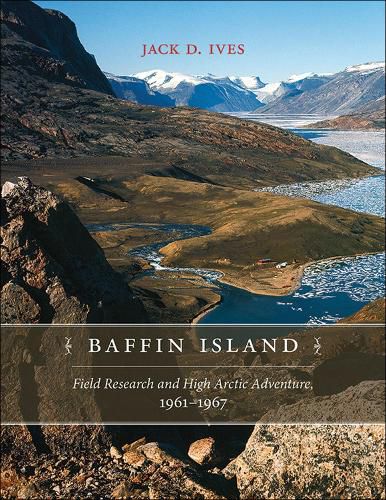Readings Newsletter
Become a Readings Member to make your shopping experience even easier.
Sign in or sign up for free!
You’re not far away from qualifying for FREE standard shipping within Australia
You’ve qualified for FREE standard shipping within Australia
The cart is loading…






This title is printed to order. This book may have been self-published. If so, we cannot guarantee the quality of the content. In the main most books will have gone through the editing process however some may not. We therefore suggest that you be aware of this before ordering this book. If in doubt check either the author or publisher’s details as we are unable to accept any returns unless they are faulty. Please contact us if you have any questions.
A geographer with extensive research experience in the Canadian North, Jack D. Ives has written a lively and informative account of several expeditions to Baffin Island during the golden age of federal research. In the 1960s, scientists from the Geographical Branch of Canada’s Department of Energy, Mines, and Resources travelled to Baffin to study glacial geomorphology and glaciology. Their fieldwork resulted in vastly increased knowledge of the Far North-from its ice caps and glaciers to its lichens and microfossils. Drawing from the recollections of his Baffin colleagues as well as from his own memories, Ives takes readers on a remarkable adventure, describing the day-to-day experiences of the field teams in the context of both contemporary Arctic research and bureaucratic decision making. Along the way, his narrative illustrates the role played by the Cold War-era Distant Early Warning Line and other northern infrastructure, the crucial importance of his pioneering aerial photography, the unpredictable nature of planes, helicopters, and radios in Arctic regions, and of course, the vast and breathtaking scenery of the North.
Baffin Island encompasses both field research and High Arctic adventure. The research trips to Baffin between 1961 and 1967 also served as a vital training ground in polar studies for university students; further, they represented a breakthrough in gender equality in government-sponsored science, thanks to the author’s persistence in having women permitted on the teams. The book contains a special section detailing the subsequent professional achievements of the many researchers involved (in addition to the later career moves of Ives himself) and a chapter that delves deeper into the science behind their fieldwork in the North. Readers need not be versed in glaciology, however. Ives has produced a highly readable book that seamlessly combines research and adventure.
$9.00 standard shipping within Australia
FREE standard shipping within Australia for orders over $100.00
Express & International shipping calculated at checkout
This title is printed to order. This book may have been self-published. If so, we cannot guarantee the quality of the content. In the main most books will have gone through the editing process however some may not. We therefore suggest that you be aware of this before ordering this book. If in doubt check either the author or publisher’s details as we are unable to accept any returns unless they are faulty. Please contact us if you have any questions.
A geographer with extensive research experience in the Canadian North, Jack D. Ives has written a lively and informative account of several expeditions to Baffin Island during the golden age of federal research. In the 1960s, scientists from the Geographical Branch of Canada’s Department of Energy, Mines, and Resources travelled to Baffin to study glacial geomorphology and glaciology. Their fieldwork resulted in vastly increased knowledge of the Far North-from its ice caps and glaciers to its lichens and microfossils. Drawing from the recollections of his Baffin colleagues as well as from his own memories, Ives takes readers on a remarkable adventure, describing the day-to-day experiences of the field teams in the context of both contemporary Arctic research and bureaucratic decision making. Along the way, his narrative illustrates the role played by the Cold War-era Distant Early Warning Line and other northern infrastructure, the crucial importance of his pioneering aerial photography, the unpredictable nature of planes, helicopters, and radios in Arctic regions, and of course, the vast and breathtaking scenery of the North.
Baffin Island encompasses both field research and High Arctic adventure. The research trips to Baffin between 1961 and 1967 also served as a vital training ground in polar studies for university students; further, they represented a breakthrough in gender equality in government-sponsored science, thanks to the author’s persistence in having women permitted on the teams. The book contains a special section detailing the subsequent professional achievements of the many researchers involved (in addition to the later career moves of Ives himself) and a chapter that delves deeper into the science behind their fieldwork in the North. Readers need not be versed in glaciology, however. Ives has produced a highly readable book that seamlessly combines research and adventure.